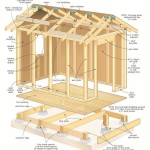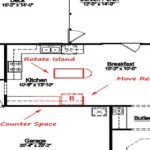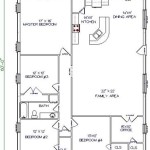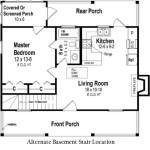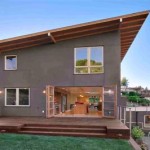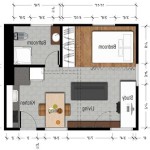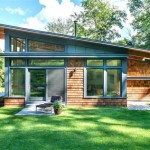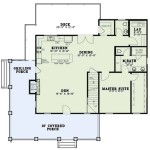Exploring the Floor Plans of Old Victorian Homes
Victorian homes, an architectural style that flourished from the mid-19th century to the early 20th century, are known for their intricate details, ornate decorations, and often, their grand size. These homes, often imbued with a sense of history and elegance, continue to capture the imaginations of homeowners and architectural enthusiasts alike. Understanding their floor plans is key to appreciating the unique living arrangements and design philosophies of the Victorian era.
Key Features of Victorian Floor Plans
Victorian homes are characterized by their distinctive floor plans, which evolved over time but shared some common features. One defining trait is their emphasis on symmetry and balance. Often, the facade would be mirrored on each side of the central entrance, with rooms arranged in a formal, symmetrical fashion. This symmetry was not only aesthetically pleasing but also reflected the growing emphasis on order and structure in Victorian society.
Furthermore, Victorian homes typically featured a central hallway that served as the main axis of the house. This hallway provided access to all the major rooms, including the parlor, dining room, and bedrooms. The central hallway also facilitated the flow of air and light throughout the house, a critical consideration in an era before widespread use of electricity and air conditioning.
Another notable characteristic of Victorian floor plans was their use of multiple levels. The houses were often two or even three stories tall, providing ample living space and allowing for a separation of functions. The ground floor typically housed the more public rooms, such as the parlor and dining room, while the upper floors accommodated bedrooms and private spaces.
Common Room Layouts in Victorian Homes
Victorian homes were designed to accommodate a variety of rooms, each with its own specific function. The parlor, a formal living room, served as a space for receiving guests and entertaining. It was typically furnished with ornate furniture and decorated with luxurious fabrics and carpets. The dining room was also a formal space, often large enough to accommodate a large family and guests. It was typically located near the kitchen but separated from it by a butler's pantry.
The Victorian era was also a time when the concept of separate bedrooms for each family member began to gain prominence. A large Victorian home might include several bedrooms, each designed for a particular family member's needs, such as a master bedroom with a private dressing room or children's bedrooms with shared play areas. Bedrooms were often adorned with elaborate wallpaper, decorative molding, and elegant furnishings.
Beyond the standard rooms, Victorian homes often included a variety of other spaces. These could range from a library or study for the family patriarch to sunrooms or conservatories used for relaxation and the enjoyment of nature. In the later Victorian era, some homes even incorporated bathrooms, a relatively new addition to domestic architecture at the time.
Evolution of Victorian Floor Plans
The Victorian era was a period of significant architectural innovation, and the floor plans of Victorian homes evolved accordingly. Early Victorian homes often had a more compact and simpler layout, with fewer rooms and less intricate details. As the Victorian era progressed, homes grew larger and more elaborate, with more rooms, more decorative flourishes, and greater attention to privacy and functionality.
In the later Victorian era, the rise of new technologies also influenced floor plan design. The introduction of gas lighting allowed for more flexible room arrangements, as the need for light and ventilation near windows became less critical. The development of central heating systems also enabled the creation of larger, more open living spaces.
Despite these evolutions, Victorian floor plans still retained their core features of symmetry, balance, and a focus on formal spaces and separate rooms. These characteristics continue to make Victorian homes unique and sought-after properties today.

House Plans Victorian Vintage Sims

Vintage Victorian House Plans 1879 Print Plainfield George La Baw Floor Mansion Plan

The Glen Flora Victorian House Plans Old Vintage

1891 Print Home Architectural Design Floor Plans Victorian Architecture Dwelling House

Untitled Victorian House Plans Mansion Floor Plan Homes

House Plan 73837 Victorian Style With 4200 Sq Ft 2 Bed Bath

Modern Cottages J H Kirby Architect Victorian House Plans Vintage

Historical Building Collectibles For Victorian House Plans Homes Mansion Floor Plan

Victorian House Plans Floor The Designers

Victorian Style House Plan 4 Beds 2 5 Baths 2174 Sq Ft 72 137 Houseplans Com

